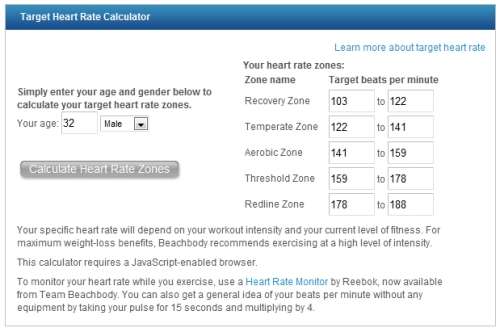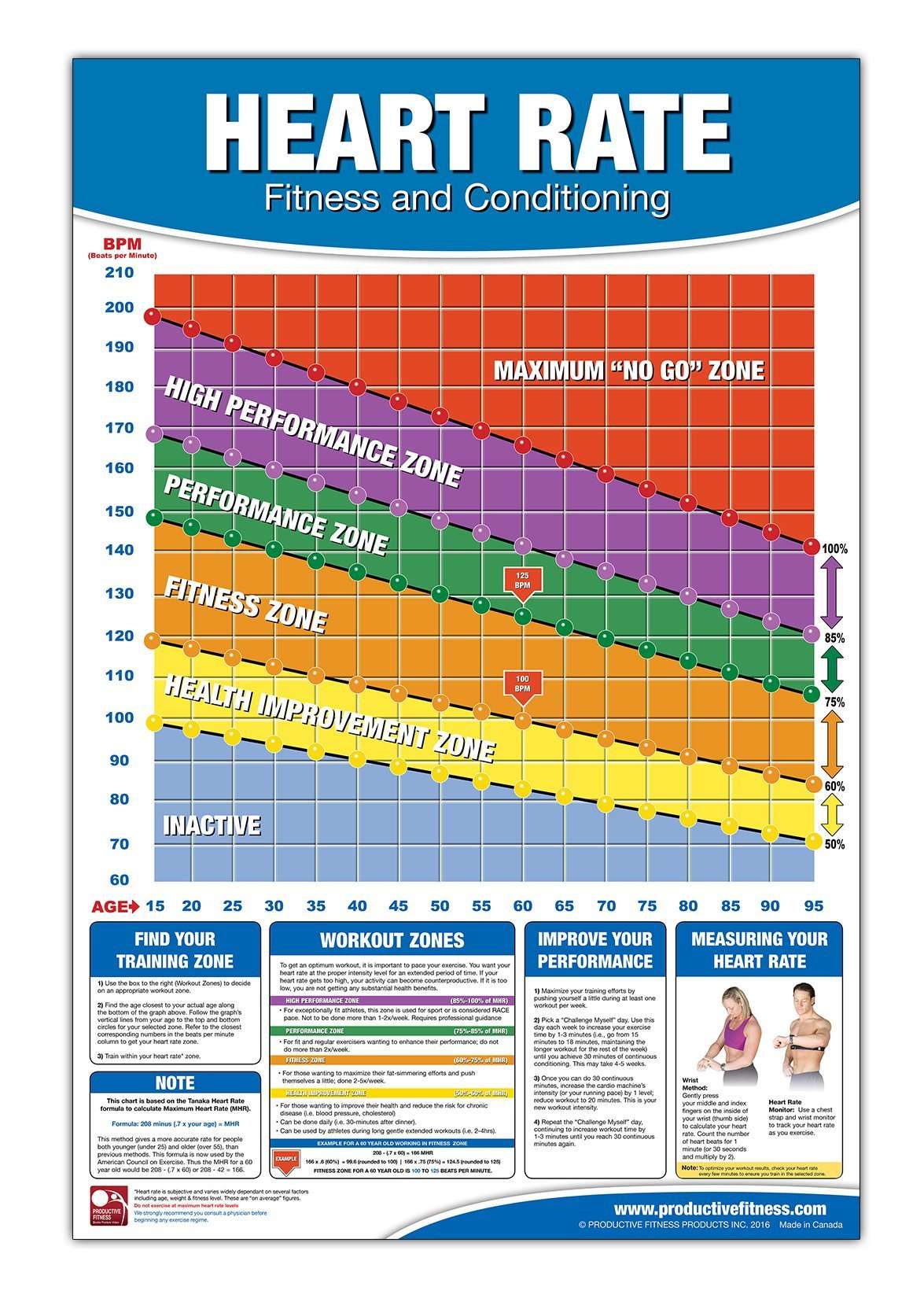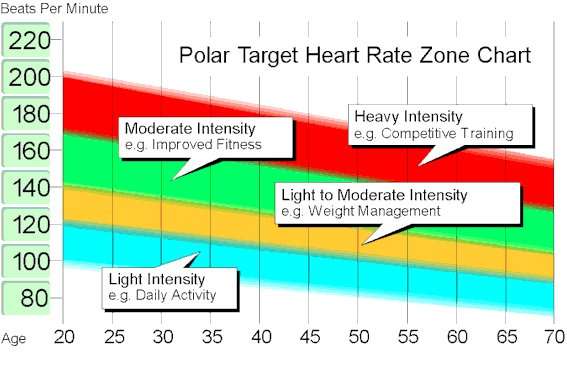Understanding Your Target Heart Rate
Nearly all exercise is good. But to be sure youre getting the most fromyour workout yet staying at a level thats safe for you, you can monitorhow hard your heart is working.
Aiming for whats called a target heart rate can help you do this, says Johns Hopkins cardiologist Seth Martin, M.D., M.P.H. Think of it as the sweet spot between not exercising hard enough and overexerting.
Target Exercise Heart Rate Guidelines
An average resting heart rate is between 60 to 100 beats a minute. Your target exercise heart rate is based on 60 – 85 percent of a maximum heart rate. For most people target exercise heart rate levels are:
- Light exercise between 60 – 70% of your maximum heart rate
- Moderate exercise between 71- 85% of your maximum heart rate.
If you are just starting an exercise routine, you may want to start out at 60 to 70 percent of your target heart rate. Then, as you become more fit, you can progress to 70 to 85 percent of your target heart rate. As your age increases, your target heart rate will decrease.
Certain aerobic or cardio workouts require that you exercise at high intensity for a set period of time with built in rest periods. This intensity can be dangerous if you are just beginning to work out or have heart or cardiovascular conditions. Thats why its important to monitor your heart rate. As a general rule of thumb:
- If you keep your workout heart rate in the lower range of the target heart rate guideline, you will be able to exercise longer.
- If you keep your exercise heart rate in the higher range of the guideline, you will have better cardiovascular and respiratory fitness.
For example: If you are 30 years old and just starting to work out, your exercise heart rate would be between 114 and 133 beats per minute, and 19 to 22 beats per 10 second count.
Use this chart to find your target exercise heart rate by age
What Is A Good Maximum Heart Rate For My Age
A lot of people want to know what represents a good maximum heart rate for their age. There are a number of factors that play into this, namely your fitness history.
If youve been consistently training your cardiovascular system the right way for many years, age is just a number. Your maximum heart rate will continue to be higher than others your age, since youve been training it, Pippin adds.
You May Like: Does Tylenol Help With Heart Attacks
How To Find Resting Heart Rate In 4 Easy Steps
Did you know that?
Resting heart rate is a really good indicator of fitness level. The lower your resting heart rate, generally the more fit you are.
Note: This does not mean that someone with a lower resting heart rate than you is fitter than you. However, a decrease in your resting heart rate is a good indicator that you are getting healthier and fitter.
Find Your Resting And Target Heart Rate

Heres how to keep the beat during any activity.
Getting too much exercise results in a high heart rate, while too little results in a low heart rate. Sounds simple, right? But did you know overtraining can cause health problems including dehydration, a drop in blood pressure, and dizziness? Or that undertraining will minimize calories burned, therefore limiting strength building and cardiovascular endurance? Its important to monitor your heart rate during exercise to avoid overtraining or undertraining.
What is a target heart rate, and why is it important?
Your target heart rate is the number of times your heart should beat per minute during exercise.
Follow these American Heart Association guidelines for finding your resting and training heart rates.
- To find your resting heart rate before a workout, place two fingers on the inside of your wrist and count the number of pulse beats in one minute
- To find your training heart rate after a workout, place two fingers on the inside of your wrist, count your pulse for 10 seconds and multiply the result by six
Don’t Miss: Can Tylenol Increase Blood Pressure
Ways To Monitor Your Heart Rate During Exercise: With Or Without Equipment
Keeping track of your heart rate during a workout is easy with a heart rate monitor. Today’s monitors don’t even require a chest strap. You can purchase a bracelet that reads the beat of the radial heart rate at the inside of your wrist and then displays that up-to-the-second value to you like a watch.
If you don’t have the funds for a heart rate monitor, you can take your own pulse. Press the tips of your forefinger and middle finger of your right hand onto the blood vessels at the inside of your left wrist. Count how many times your heart beats for 10 seconds and then multiply that value by 6 to determine your heart rate in beats per minute. While this method is relatively simple, it often requires you to slow or even stop your workout while you count and watch a clock.
If you’d rather not slow your workout to check your pulse, an easy way to gauge whether you’re within your target heart rate range is to use the “talk test.” If you feel like you can easily hold a conversation while you’re working out, you’re not working at a high enough intensity and need to pick it up. If you feel like you would struggle to get any words out, you’re working out at too high of an intensity and need to ease up a bit. Ideally, you feel like you can hold a conversation, but would struggle to talk in long sentences. When this happens, you can be pretty well assured that your heart rate is within the target heart rate range.
| Resources |
|---|
Measure Your Heart Rate
To determine your heart rate, use your first two fingers to press lightly over the blood vessels on your inner wristthe side by your thumb. Count your pulse for ten seconds and multiply this number by six.
If your heart rate is 50 to 85 percent of your maximum heart rate, you have hit your target heart zone and are working at the right level of intensity.
Wearing a multifunctional fitness tracker such as the Fitbit, or Nike+ FuelBand SE, does the work for you. The device is worn like a bracelet or watch and measures your heart rate.
Exercising at the right level of intensity improves heart and respiratory endurance and helps keep your workout at a level that is vigorous enough to meet your health goals.
Read Also: Left Ventricular Blockage Symptoms
Important Of Knowing Your Target Heart Rate
How do you get your heart rate on target?
When you work out, are you doing too much or not enough? Theres a simple way to know: Your target heart rate helps you hit the bulls eye. We dont want people to over-exercise, and the other extreme is not getting enough exercise, says Gerald Fletcher, M.D., a cardiologist and professor in the Mayo Clinic College of Medicine in Jacksonville, Fla.
Heart Rate Tips To Keep In Mind
- Start at your beginning. Before getting overly concerned about your heart rate, Martin says, its best to simply get moving. If you havent exercised much before, start where youre comfortable and gradually exert yourself more over time.
- Listen to your body. Your body provides other indicators of how hard its working that you need to consider along with heart rate. Pay attention to how hard youre breathing or sweating, and stop if you feel very uncomfortable, Martin says. Devices recording your heart rate have been known to malfunction, for exampleanother reason listening to your body is important.
- Remember that target heart rate is just a guide. Dont get overly fixated on numbers, Martin says. Ideally, they just push you to work a little harder.
Also Check: Ibs And Heart Palpitations
Calculate Max Heart Rate
To identify your personal target heart rate zone, you must first calculate your maximum heart rate. The easiest and safest way to calculate your maximum heart rate is using the Karvonen Method: 220 your age = your maximum heart rate. This method is accurate enough for most people and is a good starting point to base your heart rate zone training.
Then, you will need to take 85% of your maximum heart rate in order to find out your target heart rate zone for maximum performance.
What If My Heart Rate Is Too High
If your heart rate is above 85 to 93% of your maximum heart rate, youre overdoing it. Anything above your max is unsafe. But if you feel like youre straining, you need to slow down to let your heart recover, even if youre below your max.
You can do short bursts of exercise, such as sprints, in a high heart rate zone, but spend most of your time at a sustainable and safe intensity.
If your heart rate is near or under the 50 percent of your target heart rate range, youre not working hard enough.
As a beginner or if youre out of condition, aim for the lower range of your target heart rate, about 50% of your max. Build up gradually to be comfortable up to 85% of your max.
Because sometimes heart rate monitors fail, make note of how you feel at each heart rate level. Be aware of the following:
- Hows your breathing?
- How much are you sweating?
- Are you in pain?
Listen to your body and take a break when necessary, regardless of your heart rate zone.
Don’t Miss: Does Acetaminophen Raise Blood Pressure
Signs You May Be Working Out Too Intensely
As you exercise, be aware of your bodys response. Signs you may be exercising too intensely include:
- dizziness or lightheadedness
- shortness of breath that makes conversation difficult
- exhaustion or unusual fatigue
- feeling as if your heart is suddenly racing or pounding
- any chest pain or pressure in your:
- teeth
Maximizing Your Workouts: What Are Heart Rate Zones And Why Do They Matter

May 4, 2021 | Training
Only 5% of the adult population of the United States exercises for the recommended 30 minutes each day. Recent studies show that exercising can increase a persons lifespan by up to seven years.
Heart rate plays a key factor in getting an effective workout. Keeping your heart rate too low wont allow you to reap all of the health benefits. On the other end of the spectrum, sustaining your maximum heart rate can also cause damage.
Thats why its so important to understand how your heart rate can affect your workout and what you can do to improve your fitness regimen. Read on to learn more about heart rate zones and what they mean for your workouts.
Read Also: List The Steps Of How To Calculate Your Target Heart Rate Zone
Why You Should Monitor Your Exercise Heart Rate
- Your target heart rate is a guideline that can help you stay in a safe exercise heart rate range.
- An average resting heart rate is between 60 to 100 beats each minute.
- Because medication may affect your heart rate, its important to check with your health care provider before starting an exercise routine.
The benefits of regular workouts and exercise are huge.Regular aerobic exercise helps your cardiovascular system become more efficient, transporting oxygen and nutrients to your tissues and working muscles.The more effective your body is at doing this, the more energy you feel, the better your immune system functions, and your risk factors for many diseases are greatly reduced. Exercise also releases endorphins which help reduce stress and improve your emotional and mental health.
Even a little exercise is better than none at all. The American College of Sports Medicine recommends at least 30 minutes of physical activity five days a week. If you cant find the time for a full half hour workout, three, 10-minute sessions may have similar health benefits, as long as you increase your heart rate to a level that gives your heart a good workout.
Fitness Target Heart Rate: Is It Important Or Overrated
- Read in app
DISPLAYED on the walls of most health clubs are posters that depict the ”target” heart rates that someone should achieve while exercising. People who exercise regularly soon learn to figure this rate: Subtract your age from 220, and calculate 85 percent of that value for the top of the zone and 65 percent for the bottom.
But an increasing number of cardiologists believe that target heart rates have little meaning and that recreational athletes who slavishly take their pulses as they exercise probably are wasting their time. They believe that the body knows what its target heart rate is and that someone who exercises soon learns how to sense this level of activity.
”I’ve run in marathons and been very active, but I can admit to having taken my training heart rate three times in my life,” said Dr. Paul D. Thompson, an assistant professor of medicine at the Miriam Hospital of Brown University whose research specialty is exercise and the heart. ”If you exercise until you are slightly breathless, then you are at your anerobic threshhold. The body soon learns what this is, and you stay below it.”
Not all cardiologists and research physiologists completely agree with Dr. Thompson’s contention that monitoring one’s pulse is unnecessary.
With too much exertion, even in a fit person, the oxygen supply is depleted, and metabolism crosses a threshhold from aerobic to anerobic. This is the breathlessness that maximum exertion brings.
Recommended Reading: Slow Heart Condition Medical Term
Which Factors Can Influence Heart Rate
Many things can affect your heart rate, including:
- physical activity if youve been moving around a lot, your heart rate will increase
- fitness level your resting heart rate may be lower if youre very fit
- air temperature on hot days, your heart needs to pump more quickly
- emotions such as feeling stressed or overly excited
- medicines some can decrease your resting heart rate , while others can increase it
- age with age, the rate and regularity of your pulse can change and can be a sign of a heart problem.
What Is Heart Rate
In essence, the heart rate refers to just how fast the heart beats in a minute. Depending on many factors such as physical activity, eating, and sleeping as well as natural body functions like oxygen absorption and carbon dioxide secretion, heart rate can really vary. Not only that, but it can be different from individual to individual.
Recommended Reading: Enlarged Right Side Of Heart Treatment
Aerobic Exercise For Heart Health
Your heart is made up of cardiac muscle. This specialized tissue takes on electrical and neurological signals so that it can pump blood for the entire life of the organism. If you really think about how the heart never stops to take a break, its an amazing tissue within the human body.
Taking care of the heart should be your top priority. Its important to work the heart and raise the heart rate. Remind yourself that the heart is a muscle, which can be exercised just as easily as the biceps or triceps.
When your heart rate increases from a resting state, the muscle is exercising at a more intense rate than before. As a result, the heart gains strength and resiliency through the effort.
Why Is It Important To Know Your Target Heart Rate
Knowing your target heart rate is important because it helps you get the most of your workouts. Exercising at the right heart rate intensity helps you avoid burnout and injury. It also helps you avoid wasting time with a workout thats not vigorous enough for your fitness goals.
How can you tell if youre in your target heart rate zone?
The formula for target heart is the following:
Read Also: Esophageal Palpitations
The Importance Of Heart Rate When Exercising
When you were a child, the importance of exercise was probably stressed by your parents and teachers. Playing, running and other activities made you feel good. As youve developed into an adult, its harder to find time for exercise. Its time to prioritize exercise in your life because its effects on your heart are numerous and extremely important. In fact, your heart rate is a measurement that should always be tested as you try new and exciting exercises.
Calculating Your Target Heart Rate: An Equation To Estimate

To calculate your estimated target heart rate range, first find your maximum heart rate by subtracting your age from 220. For example, if you’re 40 years old, your estimated maximum heart rate is 220 minus 40, or 180 beats per minute.
Next, take your estimated maximum heart rate and multiply that value by both 0.5 and 0.85. Using the same example as above, with a maximum heart rate of 180, you would multiply 180 by 0.5 to get 90 as the low value in your target heart rate range, and multiply 180 by 0.85 to get 153 as the high value in your target heart rate range. Therefore, an individual 40 years old can estimate that they should exercise at an intensity that increases their heartbeat to between 90 and 153 beats per minute.
Recommended Reading: Does Tylenol Cause Heart Palpitations
